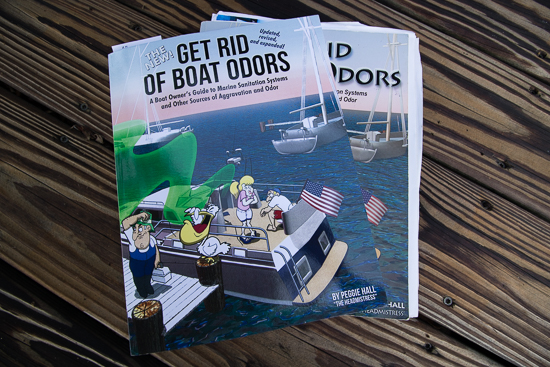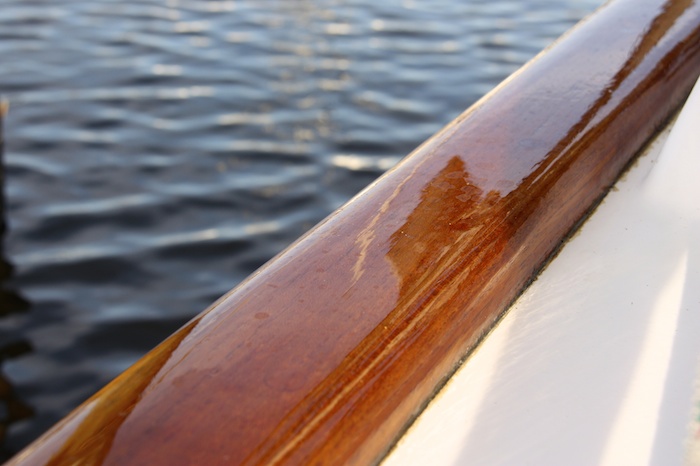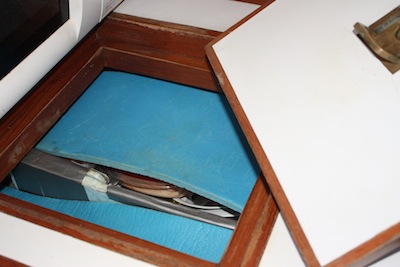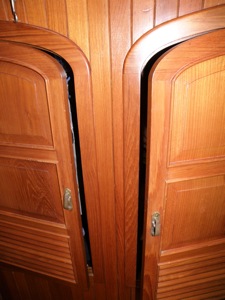Originally published in SAIL Magazine in the Cruising Tips section, January 2012 entitled “Listen to your Alternator”.
Approaching a tricky reef pass entrance, we furled the sails and turned on the diesel. Just as we cleared the first coral outcropping, the temperature gauge went flying upward. Uh oh! Obviously we just lost another alternator belt and the timing could not have been worse. We entered the anchorage and rather than scouting around for a good spot which is our normal practice, we immediately dropped the anchor. Luckily it held and we shut down the diesel.
Breaking alternator belts was not a new occurrence aboard Winterlude. Here are a few tips we learned in solving our problem:
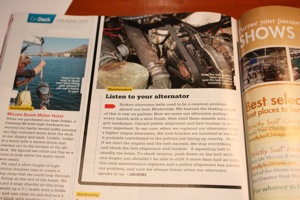
- #1 Cause. The leading cause of chewed up alternator belts is rust on the pulleys. In the salt water environment, our pulleys are always rusty. Rusty pulleys will eat a belt in a hurry, leaving a mess of tiny black rubber particles everywhere – ours even found their way to the bilge resulting in a stuck check valve! Scour the pulleys regularly (we do ours monthly) with a wire brush and then sand them with fine grit sandpaper to get rid of any remaining burrs.
- Squealing belt. If you start the diesel and the belt squeals, STOP before upping anchor or leaving the dock! A squealing alternator belt is indicative of a too loose belt begging to be tightened and it’s only a matter of time before it breaks.
- Erratic tachometer and/or hot diesel. If your tachometer is erratically jumping up and down it usually indicates a slipping belt. Many alternator belts also run the water pump and a slipping belt can result in the diesel running hot or overheating.
- Misaligned pulleys – correct alignment and belt tension is critical to efficiency and increased time between repairs. In our case, when we replaced the alternator with a higher output alternator, a new alternator bracket had to be fabricated to fit. Even though we used the original pulleys, the new bracket probably contributed to the pulleys not lining up exactly.
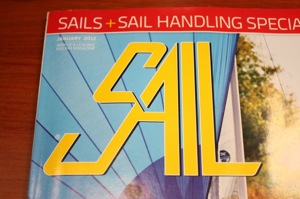
- Too tight belt. Push down with one finger at the longest stretch of alternator belt … you shouldn’t be able to get more than ½ inch of play. If the belt is stretched tighter, it may be too tight! If you get more, it’s too loose!
Monthly maintenance coupled with a pulley alignment adjustment cured Winterlude’s belt breaking problem. Each month, along with our usual routine, we added scouring the pulleys to eliminate rust and a routine check of the belt tension. We also check the belt tension everytime we plan to get underway just to be on the safe side.
Listening to what your alternator belt is saying will result in much less frustration in the long run!


